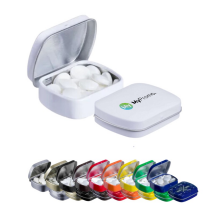Digital inlay
What is digital inlay?
Digital inlay represents a cutting-edge printing technique that has transformed the landscape of promotional gifts and personalized items. This innovative method involves embedding digital designs or images seamlessly into various materials, resulting in visually stunning products with exceptional precision. Its emergence in the early 2000s marked a significant shift in the printing industry, addressing the growing demand for intricate and detailed designs that traditional printing methods struggled to achieve. Through the utilization of advanced digital printing technologies, digital inlay offers unmatched versatility and quality, making it a preferred choice for creating customized merchandise and promotional items.Tools and materials
To execute digital inlay effectively, several key tools and materials are essential. These include high-quality digital printers capable of producing intricate designs, specialized software for image processing and design customization, and a variety of substrates such as plastics, metals, and textiles. Additionally, protective coatings or laminates may be applied to enhance durability and longevity.
Applications and examples
Digital inlay finds extensive applications across various industries, particularly in the production of promotional products and personalized gifts. Common examples include personalized phone cases, branded USB drives, personalized keyrings, and bespoke signage. Notable brands often utilize digital inlay to create unique merchandise, enhancing brand visibility and customer engagement.
Advantages
One of the primary advantages of digital inlay is its unparalleled level of customization and detail. Unlike traditional printing methods, digital inlay allows for intricate designs with vivid colors and precise detailing. Furthermore, it offers fast turnaround times and cost-effective production, making it ideal for both small-scale and large-scale projects.
Comparison with other techniques
Compared to traditional printing techniques such as screen printing or offset printing, digital inlay offers several unique features. It eliminates the need for costly setup processes and allows for on-demand printing, reducing waste and enabling greater flexibility in design customization. Additionally, digital inlay excels in reproducing complex graphics and photographs with unmatched clarity and precision.
Challenges and limitations
While digital inlay offers numerous benefits, it is not without its challenges. One potential limitation is the compatibility of materials, as certain substrates may not be suitable for digital inlay due to their composition or surface texture. Additionally, achieving optimal results may require specialized expertise and equipment, particularly when working with intricate designs or unconventional materials.
What is digital inlay?
Digital inlay is a modern printing technique that involves embedding digital designs or images into various materials. This process creates high-quality, visually appealing products with great precision. It became popular in the early 2000s as it meets the demand for intricate and detailed designs, which are often difficult to achieve with traditional printing methods.
What are the applications of digital inlay?
Digital inlay is widely used across various industries, particularly for creating promotional products and personalized gifts. Common applications include making custom phone cases, branded USB drives, personalized keyrings, and bespoke signage. This technique is favored for its ability to enhance brand visibility and customer engagement.
What materials can be used with digital inlay?
Digital inlay can be applied to a wide range of substrates including plastics, metals, and textiles. The choice of material depends on the specific requirements of the project, such as the desired durability, appearance, and functionality of the finished product.
What are the advantages of digital inlay compared to traditional printing methods?
Digital inlay offers several advantages over traditional printing methods like screen printing or offset printing. It allows for high levels of customization with intricate designs and vivid colors. Digital inlay also provides faster turnaround times, cost-effective production for both small and large volumes, and eliminates the need for costly setup processes.
What challenges does digital inlay face?
While digital inlay offers many benefits, it does have limitations. Compatibility of materials is a significant challenge; not all substrates are suitable due to their composition or surface texture. Additionally, achieving optimal results with digital inlay can require specialized expertise and equipment, especially when working with complex designs or unconventional materials.






